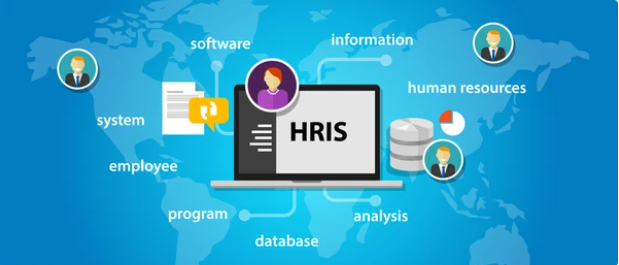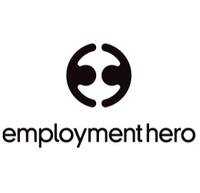HCM vs HRIS vs HRMS: What are the differences?
Types of HR software

Managing a human resource (HR) department has become more complex in the modern era, requiring dedicated software tools to handle it effectively. HR software helps with vital processes like payroll management, benefits administration, onboarding and training, etc. There are three main types of HR software tools, with each catering to different purposes:
Many people mix up these three software categories, which isn’t right. We want to put an end to that by precisely explaining their differences. After reading this article, you should understand the differences enough to explain them to someone else.

TechRadar created this content as part of a paid partnership with Employment Hero. The contents of this article are entirely independent and solely reflect the editorial opinion of TechRadar.
Human Resource Information System (HRIS)
HRIS tools store and manage the vast amounts of data required for HR functions. They allow companies to store different data types and retrieve specific files anytime. A lack of HRIS systems means companies will store the data manually, which takes too much time and effort.
Imagine companies had to keep paper files about every employee and sort through a mountain of documents to find a single one; that would be stressful. Instead, HRIS systems allow companies to store files on computers and search through them anytime. They can store files online on external “cloud” servers or on-premise servers.
Storing files on external cloud providers is more convenient because the provider takes care of maintaining their servers and ensuring they remain accessible. Hosting on-premise servers means taking on the additional work of maintaining servers, but some companies prefer it because of privacy and customization capabilities.
HRIS systems help with the following functions:
It allows companies to calculate employee payroll accurately, considering unique details like time worked, vacation days, sick leave, accrued benefits, etc. Otherwise, HR staff would do this by hand, leaving them likely to make serious mistakes.
Are you a pro? Subscribe to our newsletter
Sign up to the TechRadar Pro newsletter to get all the top news, opinion, features and guidance your business needs to succeed!
It enables companies to compute payroll taxes correctly and remain compliant with the law. Without the HRIS, you may spend thousands of dollars hiring certified accountants to do basic calculations.
Companies can accurately track employee attendance with HRIS tools. The software will be integrated with a designated machine where employees scan their badges or identification cards to clock in and out. This solution prevents attendance fraud and ensures optimal employee productivity.
HRIS tools act as a central repository for storing and retrieving data related to HR management. You can store personal identification, performance reviews, position details, banking details, and other types of sensitive data. When it’s time to retrieve a specific file, an HR staff simply performs a search and gets it.
Security is paramount when storing sensitive files, so HRIS tools have advanced safety features to prevent unauthorized data access. They use sophisticated encryption algorithms to prevent data from being intercepted in transit. They also provide access control features, allowing companies to control who can access specific types of data or not.
HRIS systems allow self-service, wherein employees can log in and update their data at will. They can log in and update their banking details and other personal information, and any change immediately reflects on the whole system. This feature makes it easy for the HR team and employees to work together since employees can be nudged to update their information anytime.
Human Resource Management System (HRMS)
HMRS tools focus on helping companies manage their productivity. They help organizations maximize employee effectiveness and make the best out of their human capital investments.
HRMS tools cover everything involved in an employee’s lifecycle, from hiring and onboarding to leaving the company. It lets companies analyze employees and understand where they can improve to bring out the best in employees.
HRMS functions include:
Companies usually set employee performance standards and evaluate employees regularly. An HRMS tool makes it easy to conduct widespread performance reviews across a company. Managers can rate employees, and the ratings data stays secure on the platform. When considering who to give promotions, leaders can easily look at each employee’s performance ratings.
HRMS systems manage the hiring process and ensure it’s seamless. You can use the system to create and post applications to different job boards. When people apply for the jobs, you’ll receive their CVs and other information in the HRMS and sort them. For the qualified people, you can interview them and track their application progress right from the HRMS.
Many candidates judge a company by its recruiting process, and leaving good first impressions is crucial. Luckily, an HRMS tool lets you do this.
After successfully recruiting a candidate, you must provide orientation and integrate them into your company’s structure. This process is called onboarding, and an HRMS tool helps greatly. You can automate paperwork and track training progress for every new hire.
You can create detailed reports from data the HR software has about your employees. For example, you can generate charts of each employee’s performance score over time and compare it against other employees.
Human capital management
HCM tools deal with managing employees directly. The functions of HCM tools are intertwined with that of HRMS tools. In fact, you can define HRMS as a combination of HCM and HRIS into one system.
HCM tools focus on workforce management. They have sophisticated analytics features to help companies generate insights to boost their productivity. They also help companies engage with employees efficiently.
HCM functions include:
Surveys are a great way to evaluate employee satisfaction. HR teams can create employee surveys with an HCM tool. The survey can be public, anonymous, or both. Some employees might feel more confident voicing their opinions anonymously, and HCM tools allow them to do that via surveys.
As people vote on a survey, HR teams can monitor the response in real time and pass the information to the company’s leadership. Effective surveys allow the leadership team to evaluate and consider employee opinions in their decision-making.
HCM tools help companies to assign responsibilities to the right employees who can do the best work. All employees have strengths and weaknesses, and maximizing the former over the latter is necessary. HCM tools help companies analyze where specific employees perform best and focus on those segments.
HCM tools act as a central database for HR services within a company. They act as a single hub for knowledge bases, formal documentation, policies and procedures that employees must follow. Any employee confused about anything can simply consult the HCM tool and retrieve the document that has the correct answers.
Biggest Differences Between HRIS, HCM and HRMS
Below is a summary of the differences between these three tools.
1. HRIS tools serve a primary purpose: storing and retrieving information. It functions mainly as a database for HR teams to store and manage information about employees.
2. HCM tools deal with managing employees to boost productivity.
3. HRMS is the most complex category because it combines the functions of HRIS and HCM tools. HRMS tools are often expensive because of their sophisticated features, but there are still affordable ones to choose from.
Things To Consider When Choosing HR Software
These are the main factors to consider when choosing an HRIS, HCM, or HRMS tool:
You must pick something that fits within your budget. Some HR tools charge a fixed monthly or annual fee depending on the number of employees, so it’s easy to estimate costs. Some demand custom pricing, wherein you’ll negotiate a deal directly with the sales team. Either way, ensure you pick a platform you can afford in the long run to avoid issues.
2, Scalability
Companies don’t remain the same forever. A company with a few dozen employees today can have a few hundred in one or two years. Hence, you must choose an HR tool that scales easily without sacrificing performance.
Cloud-based HR tools often scale easily because an external party is responsible for adding more servers and tweaking the software to support increasing usage. On-premise tools mean companies must maintain and add more servers as their usage needs scale, which is more difficult, but some companies consider it a good trade-off.
3. Ease of Use
HR software is mostly used by non-technical people. Hence, you want something that’s as easy to use as possible. Your platform should have an intuitive interface that people can easily navigate. The dashboard should be modern, responsive, and uncluttered, with features arranged neatly.
Preferably, choose an HR platform with a native mobile app. Mobile apps are easy to use and access, unlike tools that require a web browser.
4. Customer Support
You can experience issues with software anytime, and you’ll likely need external help. Choose a platform with a solid reputation regarding customer service, assuring you that you can contact professionals when you need assistance.
5. Security
HR systems contain sensitive information that can cause severe damage in the wrong hands. Hence, ensure your HR tool has advanced security features to prevent unauthorized access, e.g., two-factor authentication, access control, advanced encryption protocols, etc.
Stefan has always been a lover of tech. He graduated with an MSc in geological engineering but soon discovered he had a knack for writing instead. So he decided to combine his newfound and life-long passions to become a technology writer. As a freelance content writer, Stefan can break down complex technological topics, making them easily digestible for the lay audience.
